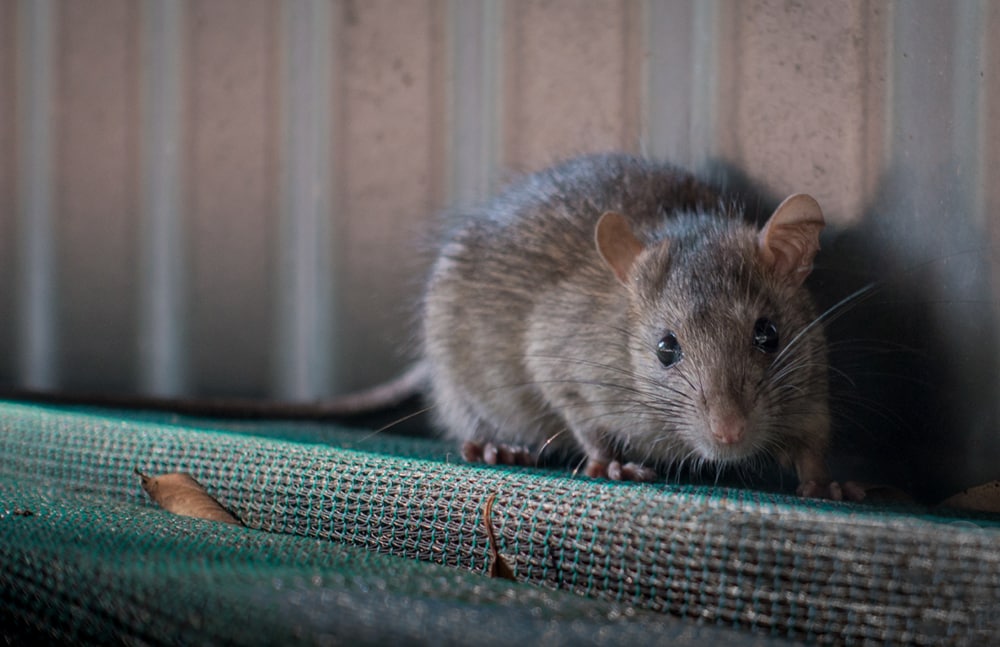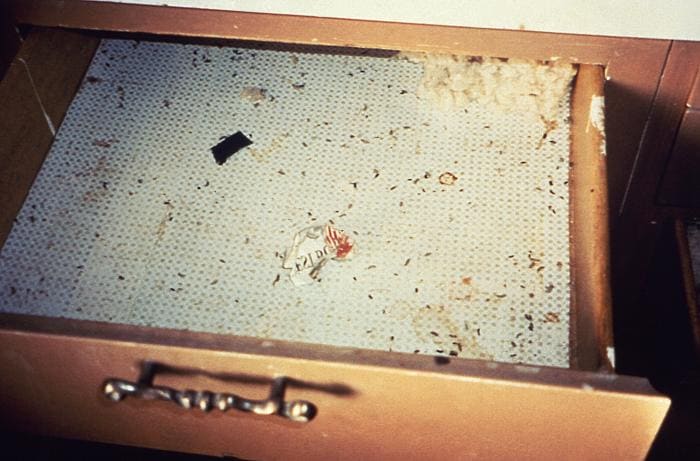What to know
- Rodents can carry many diseases that can spread directly or indirectly to people.
- It's easier to control rodents before they can establish themselves in your home or building.
- Regularly check your home for rodent droppings and gnaw marks as these are both signs of a rodent's presence.

Overview
Rodents, such as rats, mice, and chipmunks, are known to carry many diseases. These diseases can spread to people directly, through:
- Handling of rodents
- Contact with rodent droppings (poop), urine, or saliva
- Rodent bites
Rodent droppings, urine, and saliva can spread by breathing in air or eating food that is contaminated with rodent waste.
Rodents can also carry ticks, mites, or fleas that can spread diseases. Many diseases do not cause any apparent illness in rodents. This means you cannot tell if a rodent is carrying a disease just by looking at it.
Infestation of rodents in and around the home is the main reason disease spreads from rodents to people. The best way to prevent a rodent infestation and contact with rodents is to remove:
- Food sources
- Water
- Items that provide shelter for rodents
Signs that rodents are present
The first signs of rodents usually appear before you even see a rat or mouse. Regular inspection of the inside and outside of a home or business is important to identify signs of rodents. It's easier to control rodents before they have time to become established.

Rodent droppings
Rodent droppings can be found anywhere rodents have accessed. They are common in cabinets, drawers, and other areas out of plain sight. Rodent droppings are pointed at one end and often contain hair.
It can be challenging to know if there is an active rodent population just by examining droppings. One way to be sure is to safely clean the area. If droppings are present after cleaning, this indicates an active rodent presence.
Gnaw marks
Rats and mice gnaw to create better access points and keep their teeth at the proper length. Their teeth leave distinct marks and are a good sign that rodents were active in the area. Gnaw marks alone may only mean that rodents were active in the area at some point. Gnaw marks are often found in the same area as droppings.
The same clean-up techniques can be used to help determine if there is an active rodent presence.
Diseases spread by rodents
Diseases spread directly by rodents
Certain diseases can spread from rodents to people through direct contact with infected rodents. This can be through breathing in contaminated air, touching contaminated materials and then touching eyes, nose, or mouth. They can also spread by being bitten or scratched by an infected rodent, or eating food contaminated by an infected rodent.
Bacterial diseases
Viral diseases
- Hantavirus
- Hemorrhagic Fever with Renal Syndrome
- Lassa Fever
- Lujo Hemorrhagic Fever
- Lymphocytic Choriomeningitis (LCM)
- Monkeypox
- Omsk Hemorrhagic Fever
- South American Arenaviruses*
*Argentine hemorrhagic fever, Bolivian hemorrhagic fever, Chapare Hemorrhagic Fever, Sabiá-associated hemorrhagic fever, and Venezuelan hemorrhagic fever.
Diseases spread indirectly by rodents
Certain diseases can spread from rodents to people through indirect contact. This can occur when people are bitten by ticks, mites, fleas, and mosquitos that have fed on infected rodents. Diseases can also spread to people from rodents through the consumption of an intermediate host (for example, beetles or cockroaches).
Bacterial diseases
- Anaplasmosis
- Borreliosis
- Flea-borne (Murine) Typhus
- Lyme disease
- Plague
- Rickettsialpox
- Scrub typhus
- Tick-borne Relapsing Fever
- Tularemia
Parasitic Diseases
Viral diseases
Resources
Additional information from CDC
- Vector Control Resources
- Rodent Control After a Disaster
- State and Territorial Health Department Websites
Technical resources
- Integrated Pest Management: Conducting Urban Rodent Surveys [PDF – 35 pages]
- Rodent Exclusion Manual: Mechanical Rodent Proofing Techniques: A Training Manual for National Park Service Employees (nps.gov) [PDF – 104 pages]
- Keep Pests Out [PDF – 1 page]
